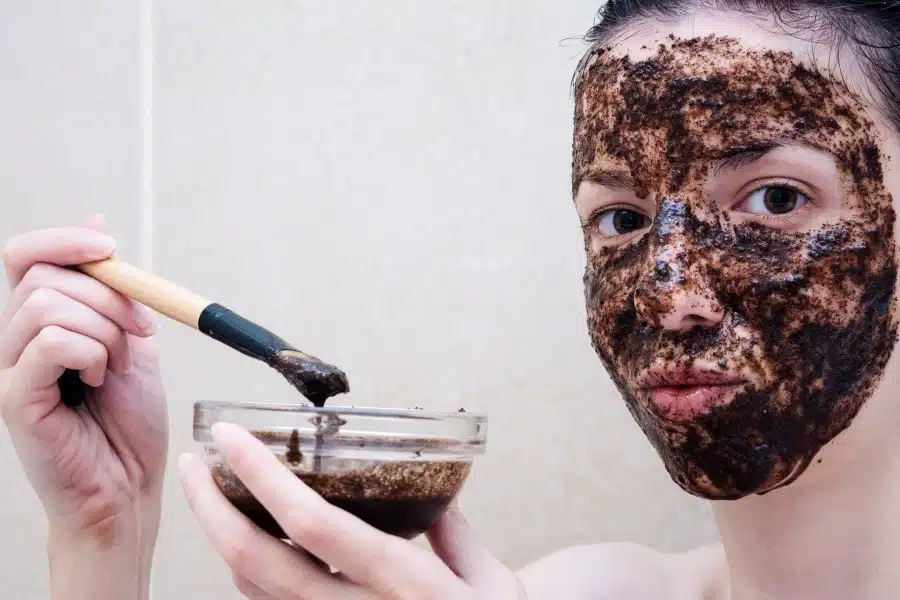Lemon myrtles are an absolute treat to our lives! Their aroma, nutritional value, aesthetics, and usage never fail to amaze us. It is a native Australian plant that has its unique charisma. It is everyone’s favorite because of its heavenly and relaxing smell.
We have covered 15 facts about lemon myrtle! Trust us; you will fall in love with this plant after you get to know it!
15 Facts about Lemon Myrtle
Lemon Myrtles is full of wonders! You will be in awe when you get to know these 15 facts about lemon myrtle. Keep reading!
Name and details
Lemon Myrtles is called the ‘Queen of Lemon Herbs’. It’s also known as ‘Backhousia citriodora.’ The name was given in 1853 after the English botanist James Backhouse.
Lemon myrtle is a subtropical myrtle species. These are widely popular as ‘sweet verbena trees’. The trees can reach up to 8m in terms of height.
The close family of lemon myrtles is cinnamon myrtle or backhousia myrtifolia and aniseed myrtle or backhousia anisata.
This plant is endemic to subtropical rainforests of central and south-eastern Queensland, Australia, along with a natural distribution from Mackay to Brisbane.
![15 Facts about Lemon Myrtle [Know the Unknown!!] 3 Lemon Myrtle Name and Details](https://knowworldnow.com/wp-content/uploads/2023/05/Lemon-Myrtle-Name-and-Details.webp)
Citrus Content
You will be surprised to know that lemon myrtles are considered lemonier than the lemon itself! It is because its leaves contain the highest amount of citral than any plant in the world.
The rate is near 90-98%! The citral contains strong antifungal and antimicrobial properties. For this reason, its smell and flavor leave refreshing citrus notes!
Diseases
If you are growing lemon myrtles, you should be careful about spider mites, aphids, and myrtle rust. You can cure the disease caused by aphids and spider mites by applying horticultural oil and insecticidal soap.
However, myrtle rust, a fungal disease, leaves purple spots on your plant which are not curable. You will have to take care of them properly to prevent this!
People also love to read: Lemon Myrtle Oil
Soil Condition
Lemon Myrtle grows best if it faces full sun or partial shade. If you are harvesting lemon myrtles, ensure that the soil is moist, organically enriched, and well-drained.
You can keep the soil slightly acidic too. However, the pH level of the soil should stay between 5.5-6.5!
Use as medicines
If you have caught a cold or have mild pain, you can drink lemon myrtle tea. During ancient times, Australians used to crush lemon myrtles leaves and inhale the smell to cure headaches. The oil extracted from lemon myrtles works as a natural antiseptic.
You can also souse its leaves in water and use it as a wash. Lemon Myrtle infusions are antiviral and antimicrobial. Thus they help to mitigate inflammation. It also contains zinc, magnesium and calcium.
Culinary Aromatics
Lemon Myrtles are considered to be strong culinary aromatics. Fresh leaves can be sprinkled in any dish to make it aromatic. You can add its leaves to cakes or pastry items for a zesty flavor.
If you are cooking fish, you can wrap it with the leaves and keep in barks to cook. You can also mix the dry leaves with olive oil to make it more flavorful.
It’s a perfect alternative to lemongrass. If you dry the leaves at a higher temperature, the citrus content will significantly improve.
Use in Cosmetics
Citral oil or lemon myrtle essential oil is hugely used in cosmetics for adding a lemony scent. They are specially used in serums, soaps and creams.
It’s also called lemon-scented verbena. This oil is extracted from leaves and twigs of lemon myrtle. The citral properties of lemon make the oil anti-inflammatory, antiseptic and antibacterial.
Drink as Tea
You can switch your regular tea with lemon myrtle tea because it is high in antioxidants and calming. It’s enriched with vitamins C and E. If you steep the leaves in water, the herbal infusion will give you great results by boosting your immune system.
People also love to read: 12 Benefits of Drinking Lemon Myrtle Tea
Symbolism
The symbolism of lemon myrtle is closely connected to beauty, love, and romance. In many cultures, they are deemed to be a sign of marriage.
They decorate their venue with lemon myrtle flowers. The white flowers represent purity, innocence, peace and rebirth. The delicate scent of white flowers creates a soothing ambiance.
Height and growth
Lemon Myrtles are compact evergreen shrubs. If you grow it in your garden, it will reach up to 16 feet high. If you let it grow in its natural habitat, it will grow up to 25 feet high.
They grow best in USDA zone 10 to zone 11. They generally take around 3 to 4 years to reach full maturity.
Weather Condition
These plants struggle when they are exposed to frost. As lemon myrtles are native to subtropical rainforests, they need a humid condition for their fulfillment.
Myrtles need 6 hours of direct sunlight daily if they are in warm climates. However, they can tolerate a comparatively cooler climate depending on their sizes.
Usage against diseases
If you have sinus or bronchitis, lemon myrtles can do wonders for you! It also helps with indigestion and irritable gastrointestinal disorders.
These are helpful in treating molluscum, oral health, acne, sore throat, depression, headache, bad odor, cramps rheumatoid arthritis, insomnia, asthma, skin problems, insect infection, and whatnot.
Propagation
These plants can be propagated through seeds or cuttings. If you plan to use seeds, soak the seeds overnight.
Don’t forget to sow in trays with seed-raising mix to make sure that they are slightly covered with the mix. Keep it in a warm spot. Mist regularly to make the soil moist.
Fertilizing
If your plants are small, apply a mixture of OCP eco-seaweed and OCP eco- aminogro every 2-3 weeks to increase the growth. If they are grown, apply a layer of compost or manure every spring and autumn in the ground.
It will keep them lively. If you have poorly moist soil, add some pelletised organic fertilizer and top up the mulch.
Branching
Lemon Myrtles have low branching habits. Thus you can trim them at any time. If it’s a shrub, potted plant or screening hedge, you will need to prune on a regular basis. This requires your 100% attention. If you are skeptical about it, try to hire any garden maintenance service.
FAQs
Is lemon myrtles helpful for weight loss?
If you are trying to lose weight and maintain a healthy body, lemon myrtles are an excellent ingredient for you. They boost your metabolism and enhance weight loss.
Is lemon myrtle good for anxiety?
Lemon Myrtles have a calming effect that relieves stress. It encourages better sleep, uplifted feelings, and relaxation. The scent helps to soothe the mind. The reassurance from it calms down your anxiety.
Conclusion
Lemon Myrtles have every quality to be everyone’s favorite. It’s easy to grow. You don’t need to face much hassle while taking care of them. It provides innumerable numbers of benefits. They are aesthetically pleasing and citrusy in smell!
Hopefully, these 15 facts about lemon myrtle will be useful to you!

![15 Facts about Lemon Myrtle [Know the Unknown!!] 2 15 Facts about Lemon Myrtle](https://knowworldnow.com/wp-content/uploads/2023/05/15-Facts-about-Lemon-Myrtle.webp)





